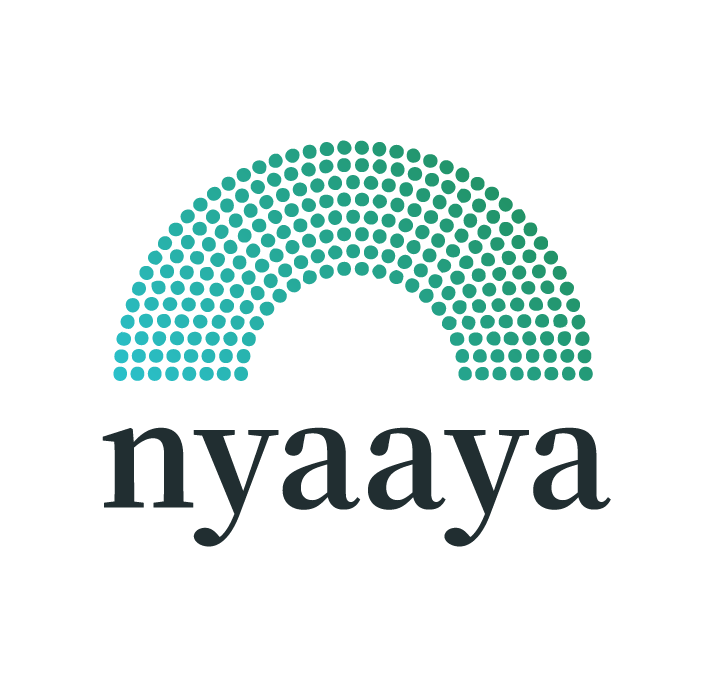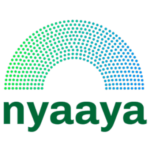By Lavish Sharma


What is Manual scavenging?
Manual scavenging is one of the most degrading and hazardous jobs that one can be employed in. It is a process in which manual removal of human excreta is done by a person known as manual scavenger. The job is not only restricted to human excreta, but these workers are also employed to clean sewages and manholes manually. This is not a job which is restricted to India only, but every country employs these kinds of workers for cleaning purposes. The difference is that in India these workers do the work manually without any safety equipment, whereas in other countries proper safety gear is provided to such workers. Many countries have even started to engage robots for this kind of work.
Where does this practice originate from?
This inhumane practice of manual scavenging is existing in India from time immemorial. The core of this practice is linked to caste-based discrimination and social stratification persisting in the country. The lower castes have always been forced to carry out these inhumane activities by the dominant upper castes. Earlier when there were no flush toilets, the lower castes, especially the Dalits, were employed on meagre amounts to clean such waste, usually through bare hands or with a temporary handmade tool. They were also tasked with collecting and carrying the waste out on their baskets to trash them out.
After 73 years of independence, the situation cannot be said to have changed drastically. This kind of practice is still prevalent in many rural parts of India, where on the basis of their caste identity, many Dalits are forced into such work. In urban parts, although the scenario has somewhat changed owing to it being made a full-fledged employment work wherein the municipal authorities would employ them on a contractual basis, the manner of such employment still remains to be a problem. However, in urban areas the employees are mainly from the Dalit community and here too no safety equipment is provided to them. At times they are even required to go into these manholes bare body.
What are the health hazards surrounding the work?
A Manual scavenger usually needs to dive down a manhole for cleaning purposes or for removing any blockage in the drain. These drains are full of toxic material coming from different places including human excreta, other domestic wastes and medical wastes. Manual Scavengers also work in waste channels (Nalaas) for removal of any solid waste interrupting the stream. These hazardous channels and holes consist of toxic gases like H2S, N2O, CO2 etc. and since no safety equipment is provided to them they mostly use bamboo shafts, steel buckets and even their own bare hands to clean off the waste. These bad working conditions can lead to many life-threatening diseases like Tuberculosis which is one of the most common disease observed in these people. Along with it skin diseases, Asthma, Cryptosporidiosis Cardiovascular degeneration, musculoskeletal disorders like osteoarthritic changes and intervertebral disc herniation, infections like hepatitis, leptospirosis and helicobacter, skin problems, respiratory system problems and altered pulmonary function parameters are common diseases seen in manual scavengers.
Who are the major employers of these workers?
The prime employers of manual scavengers are:
- local governments including the Panchayats and Municipalities,
- the Indian Railway and
- private personals.
According to the Ministry of Social justice and empowerment, there are a total of 62,904 identified manual scavengers in India under Municipalities and Gram Panchayats in 13 states from 2013 to 2020. In the railways, it is estimated that there are 95000 Railway cleaners employed for such works. Lastly, with regard to private organizations/individuals, there is no clear data available as they are mainly employed on a day-to-day basis without formal contracts.
Who are majorly employed as manual scavengers?
As discussed earlier, manual scavenging being a caste based employment, it is the lower caste, mainly Dalits who are employed for this inhumane work. With Dalits, the stigma that was attached back then exists even today, and the same is backed by statistics as well. In a survey conducted by Pune Municipal Corporation on the 1091 manual scavengers on the basis of caste wise distribution of sewage workers employed by them, it was found that all the people employed belong to lower caste mainly scheduled castes. Also in a study conducted by Rashtra Gramin Abhiyan on the plight of manual scavengers in the country from 1992 to 2018, they found that a total of 302 people had died because of this job and when an interview was taken of their families it was found that 94% of them belonged to Scheduled Castes.
What are the legal protections available to manual scavengers?
The following are the major legislations, Constitutional provisions and government schemes protecting the Manual scavengers: –
- Fundamental rights enriched under Part III of the Indian Constitution – Article(s) 14,17, 19, 21, 23 and 47 guarantees protection by providing them equality, safeguarding them from untouchability, the freedom to practice any profession, right to live, protection from forced labour and protection to their standard of living respectively.1
- Protection of Civil Rights Act,1995 – Section 7A of this Act makes it an offence to compel any person to practice scavenging.2
- The Scheduled castes and Scheduled tribes(Prevention of Atrocities) Act,1989 – Section 4(i)(j) of the act makes it a crime to make, employ, or permit anyone to do manual scavenging3.
- The Employment of Manual Scavengers and Construction of Dry Latrines (Prohibition) Act, 1993– This was the first proper legislation targeting the plight of manual scavengers. It made the employment in scavenging and construction of dry toilets punishable by imprisonment for up to one year and a fine of Rs. 2000. This also included punishments against employers who give permission to do such work. Unfortunately, even after this legislation, it failed to fulfil its purpose. The reason being that the definition of manual scavengers was so narrow, ultimately failing in providing protection to many people. Seeing the lack of protection in the legislation, Safai Karamchari Andolan approached the Court in 2003 against the fallacies of the act.
- The Prohibition of Employment as Manual Scavengers and their Rehabilitation Act,2013 – After 20 years of the previous act the parliament finally decided to enact a new, improved legislation. This new act, unlike the old act, broadened the definition of manual scavengers including sewer workers, septic tank cleaners etc. In the new act, these offences were also made Cognizable and Non-Bailable. The fine amount on violation was also increased to Rs. 50,000. However, this new Act exempted the railways from the purview of this law.
- What do the statistics tell about them?
If we look at the statistics, it can be seen that even after the parliament legislations and Supreme Court judgements the problem is still prevalent in modern-day India. According to data available on India stats, a total of 13657 manual scavengers were identified under the 2013 Act during a survey, but on the contrary, if we look at the statistics of the number of persons arrested under the Act it could be seen that only one person was arrested in India under the said act. These statistics clearly show that as a country we have lagged behind in protecting our citizens from this inhumane treatment. Even after two legislations, their plight continues to exist in modern India.
Where and what are the improvements we need?
This job of Manual scavenging is inhumane, unconstitutional and hazardous to health. A lot of changes are needed not only in the laws but also in the societal mindset that stigmatizes the people of lower castes by associating them with such work. The new law of 2013 still has many drawbacks including, no time limit that is specified for identifying these scavengers, a statute of limitation preventing complaints made after three months and so on. No rigid provisions for health measures and health benefits were taken into account; rather, only financial benefits were looked upon. There is no provision for providing education to eradicate the stigma that has been attached to them. Although the laws and judgments explicitly provide for supplying the equipment of protection for these workers like gloves, gas masks, oxygen tanks, glasses etc., it is seen to be not implemented in practice. In these modern times, where the world is moving toward a technological era, the same should be adopted in this kind of work as well. Mechanical robots should be used rather than employing people manually for the work. Many countries like Singapore and Russia have started to engage robots for this kind of work and the same should be done by India for its suffering manual scavengers.
Nevertheless, the times are changing and various governments, local municipalities and educational institutes have recently been cognizant to this issue by developing and using Mechanical robots for manual scavenging.. Genrobotics, a company founded by nine young engineers in Thiruvananthapuram have laid the foundation stone in this field. They made a robot called “Bandicoot”, a semi-automatic robot, named after a species of rat found in the sewers. The robot is composed of two main components, one stand unit and one robotic drone unit. The stand unit makes the base and support for the machine and is seated outside the sewer. The drone unit dives into the manhole to undertake the cleaning and unblocking operations. The robot takes 15 minutes to clean small sewers and 45 minutes for the bigger ones. The Municipal bodies in Kerala, Tamil Nadu and Andhra Pradesh have already commissioned bandicoot and have also trained the manual scavengers to operate them. The Delhi government also initiated the talks with the Kerala Government for commissioning them in Delhi. Similarly , the Kolkata Municipal Corporation is also planning to commission these robots. Muncipal Corporations in Gurugram have already started using them.
Manual scavengers have remained a section of laborers whose rights are enriched in various legislation, precedents and the Indian Constitution. One might argue that if so much has been provided to them in forms of legally enforceable rights, then we as a nation have failed to protect them. The answer lies in the core of the arguments itself i.e. “We” have lacked in recognizing them as humans. We still associate this form of employment with the caste system where we believe that people from lower castes are the ones who are made for this job and hence be the ones employed for it. There is also an urgent need for technological reforms to eradicate this inhumane practice by which real freedom would be provided to them.
__________
Lavish Sharma is a student at Institute of Law, NIRMA University. Views are personal.


